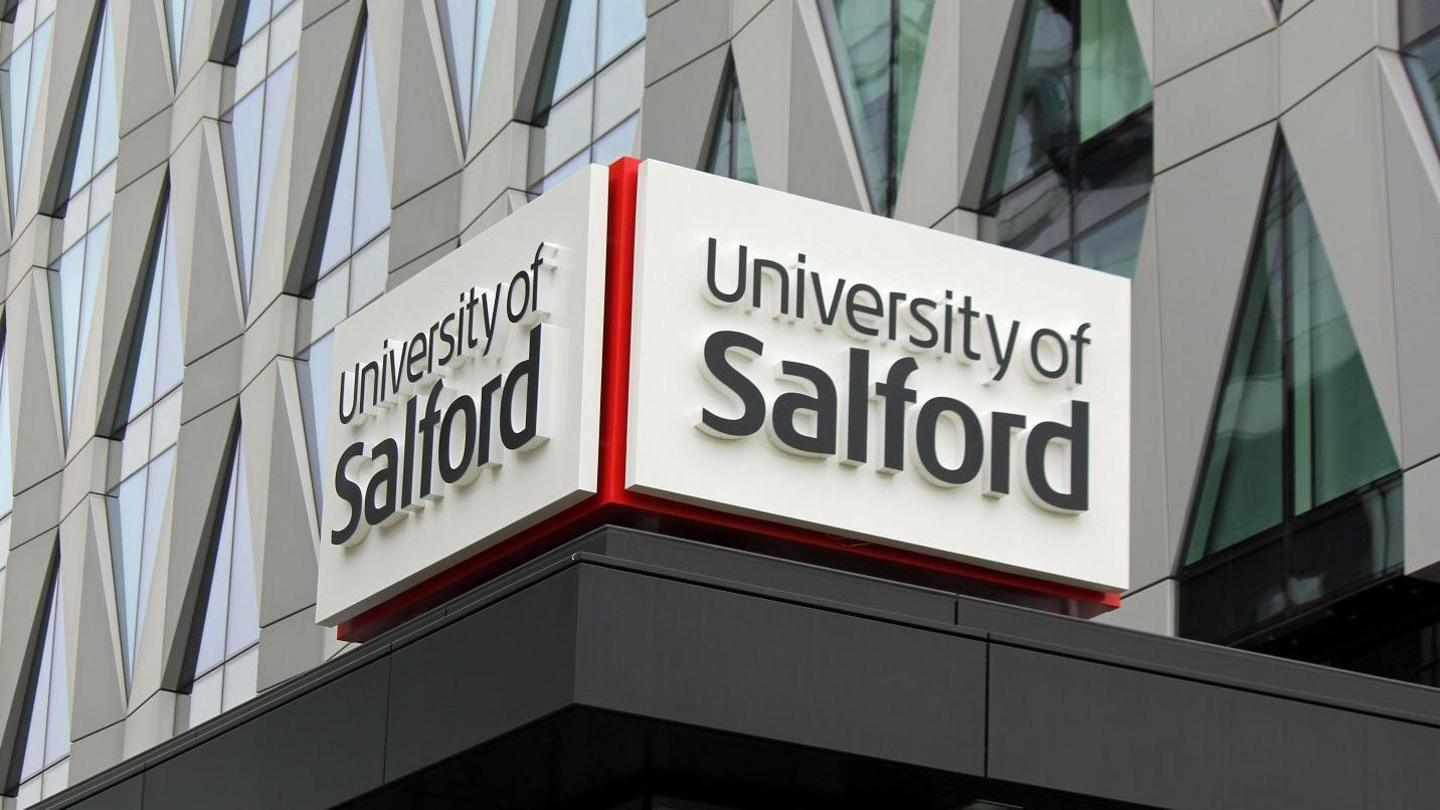Why is UK's best building of 1996 being demolished?

The Centenary Building had previously housed Salford University's Faculty of Art and Design
- Published
In the 1990s the Centenary Building in Salford was praised for being "dynamic, modern" and "sophisticated".
It was the winner of Britain's most prestigious architectural award, but within 30 years of being built and admired it is now set to be demolished.
Why has what was once deemed the country's "best" structure fallen so far out of favour?
The building housed the Faculty of Art and Design when it opened at the University of Salford in 1996, but has been standing empty for eight years.
The university says its "ageing infrastructure" means it no longer "meets modern standards" and it will be flattened to make way for a housing development.
But some in the architectural field argue that repurposing the building should be considered.
'Morally wrong'
There is a "lot of discontent" in the architectural community over the demolition, according to Eddy Rhead, director at the Manchester-based Modernist Society.
But there has been some criticism from the public of the building's appearance and it lying empty all these years.
Responding to the news on social media, some people described the building as "ugly" and say "it should never have been built", although others express dismay at how young it is.
"The public don’t cherish 20th Century buildings," Mr Rhead says.
"It was in an unsexy part of Salford, which didn’t get much love."
He adds: "In this day and age, we can’t keep demolishing and rebuilding - it can be reused.
"It’s lazy and unimaginative and, without sounding too dramatic, morally wrong for such a young building."
Designed to the demands of a quick turnaround and a relatively cheap £4m budget by Manchester-based architect Stephen Hodder, the building was praised at the time for a “dynamic, modern and sophisticated exercise in steel, glass and concrete” by the Royal Institute of British Architects (Riba).
The judges were so impressed they awarded it their inaugural Stirling Prize in 1996 for the UK’s best new building.

Salford and Manchester have seen a boom in skyscraper-building alongside older buildings like Salford Lads' Club
Mr Rhead says: "From an architectural and sustainability point of view, [demolishing the building] is a terrible message to send out.
"It was clearly valued once."
But the university says the building's "ageing infrastructure means it no longer meets modern standards and requirements".
In the mid-1990s the decision to put in underfloor heating and not to install air conditioning were seen as groundbreaking in environmental terms.
However, staff complained it was too hot in summer and too cold in winter, plus a lack of sound insulation meant the sound of feet on the metal staircases clanged around the building.
Mr Rhead says these problems are "all surmountable"
"If it was a Victorian building, which are riddled with problems, you'd deal with it."

The Victorian-era Manchester Town Hall is subject to an eight-year revamp, which has gone over budget by £29m
Stephen McCusker, an architect who teaches at Manchester School of Architecture, is also unconvinced by the university's justification for demolition, saying: "There’s always an option – that’s their view – they have to weigh up priorities."
He says requirements “change all the time” and building owners should “think about repurposing first before demolition”.
The university says it paid "careful consideration" to the building's history but it "has now been vacant for a third of its built life".
A 2018 proposal to convert it into a primary school proved fruitless.
Along with Salford City Council, the university now plans to demolish the building to make way for the new Adelphi Village neighbourhood, which will accommodate about 900 homes amid huge housing demand.

The University of Salford has about 26,000 students and 2,500 employees
With a skyscraper boom rippling through Manchester city centre and nearby Salford, Mr Rhead says Centenary Building is now "sitting on prime real estate" and the prestige of a Riba Stirling Prize "doesn’t give any protection from cold-hearted commercialism".
Riba board chairman Jack Pringle believes "there must be a case for all Stirling Prize winning buildings to be considered for listing", which protects buildings under the law.
"We don’t have the detail to comment definitively on this specific case," he adds, "but we know, firstly, that the inventive re-use of buildings is critical to our net zero future, and would always advocate for a whole-life carbon assessment to understand whether re-use is truly feasible."
Mr Hodder says he's disappointed by the decision to knock down the building he designed.
"I think that with concerns about climate change and carbon, we should be going to great lengths to see how we can adapt existing buildings," he says.
He also told the Architect’s Journal, external, which revealed the decision: "I simply cannot support the demolition of a building that is only 30 years old."
Related topics
- Published11 November 2024

- Published25 April 2024
